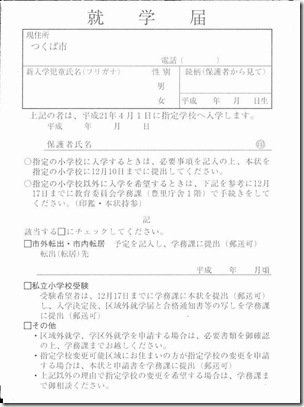Once you get past a decade, you stop counting.
I’m referring to the number of years one has spent living in a foreign land, a second home you have adopted as your own, and one which you are not intending to leave any time soon.
Every time I travel abroad, coming back to Japan is simply what it is: coming home. It’s my home now, even if I have to give my fingerprint data and have my photo taken each time I go through immigration. My residence card says that I am a permanent resident, and it means exactly what it says: I’m here for the long-haul, people! Permanent as in for as long as I shall live, which I hope to be a rather long one, given the high longevity of the people here.
But people still ask. I’m not just referring to co-workers or colleagues, friends and acquaintances. I’m referring to total strangers, like people delivering goods or repairing machines or whatever. As to whether they are simply curious by nature or erroneously trying to be polite by pointing out the obvious that I am not Japanese, I could not tell. When I lived in the UK, I don’t recall being asked this all the time. People just accepted that you’re different, and obviously you’re from somewhere else, and what really is the whole point in asking?
Where are you from, originally?
Originally? Why, my mother’s womb, where else?
After more than twenty years of being asked this question, it just gets plain tiring. The next question is, more often than not, this:
So how long have you been in Japan?
Really? Why do you care?
I try to sidestep this question with this answer:
Too long.
Of course, nothing would please me more if the real reason people are still asking me this question is that I still look like that dashing, young lass who looked equally bewildered and happy about being thrown into a strange, new world. Like I just stepped off the boat and landed yesterday.
If that were the case, by all means, ask. 🙂









 But now, having recently received the official notice for school admission (see image on the left) from the city government (schools are assigned based on residence), we are back to facing the same dilemma. Akala niyo nakaligtas na kayo! After all, we won’t be staying in Cambridge forever, and surely by next year we will be back in Japan. Of course, we are not forced to put our child in the assigned school, but if we do give our consent, all we have to do is return back the card with our details and personal stamp (hanko). If not, then we’ll have to tick one of the boxes at the bottom to explain our reasons/circumstances why we refuse to do so.
But now, having recently received the official notice for school admission (see image on the left) from the city government (schools are assigned based on residence), we are back to facing the same dilemma. Akala niyo nakaligtas na kayo! After all, we won’t be staying in Cambridge forever, and surely by next year we will be back in Japan. Of course, we are not forced to put our child in the assigned school, but if we do give our consent, all we have to do is return back the card with our details and personal stamp (hanko). If not, then we’ll have to tick one of the boxes at the bottom to explain our reasons/circumstances why we refuse to do so.
